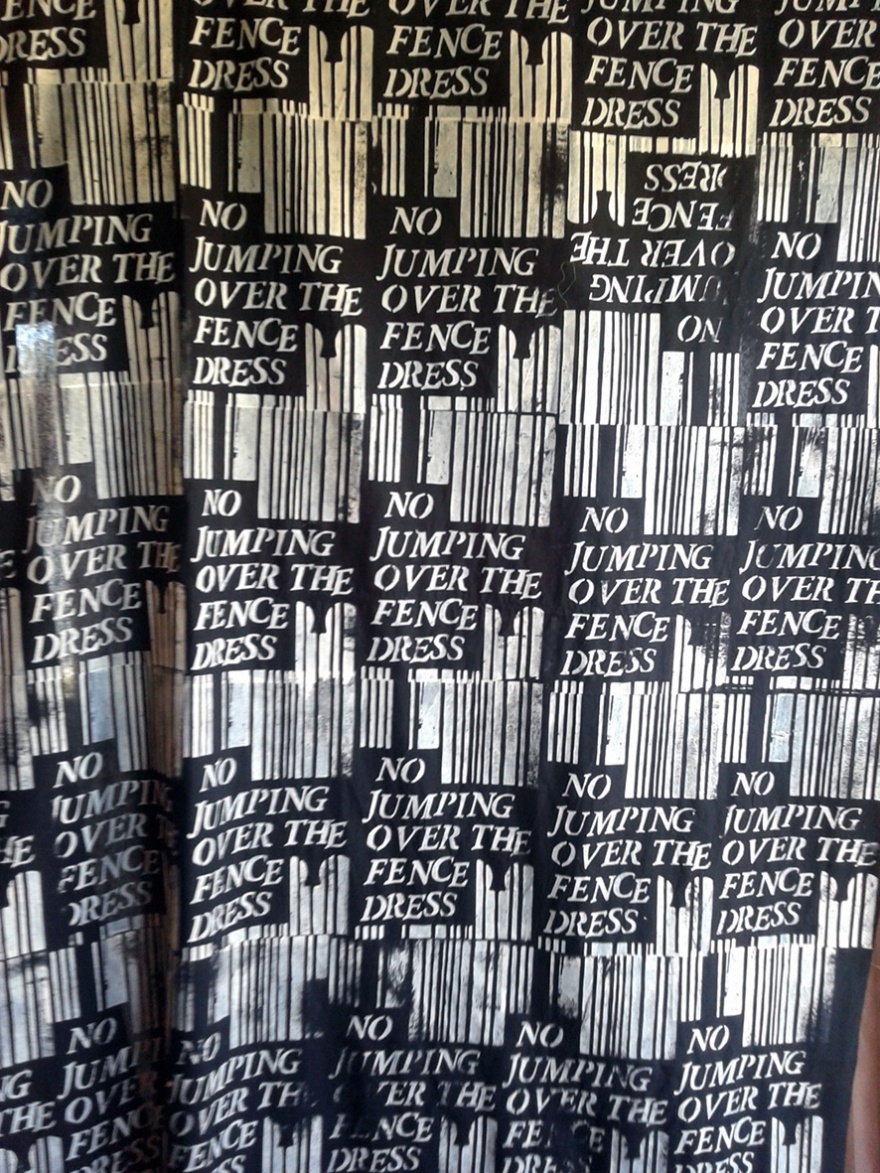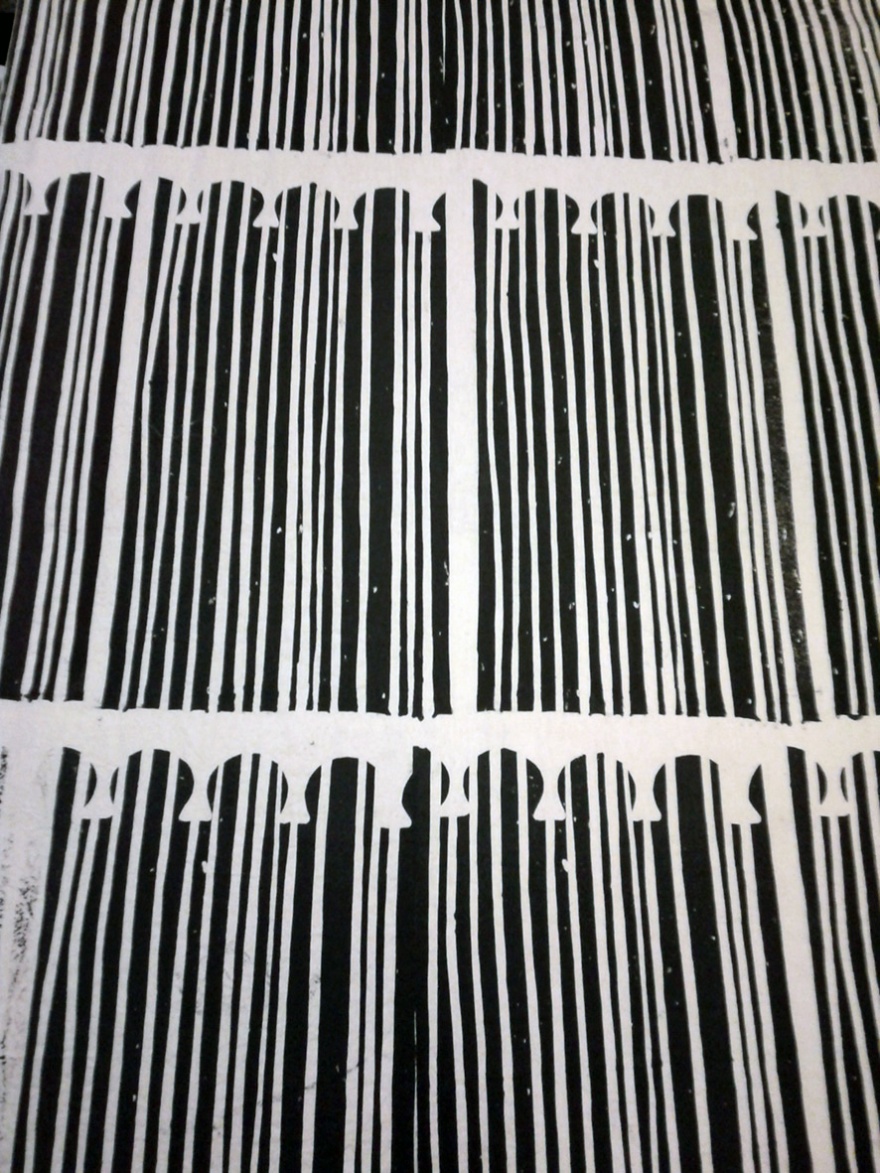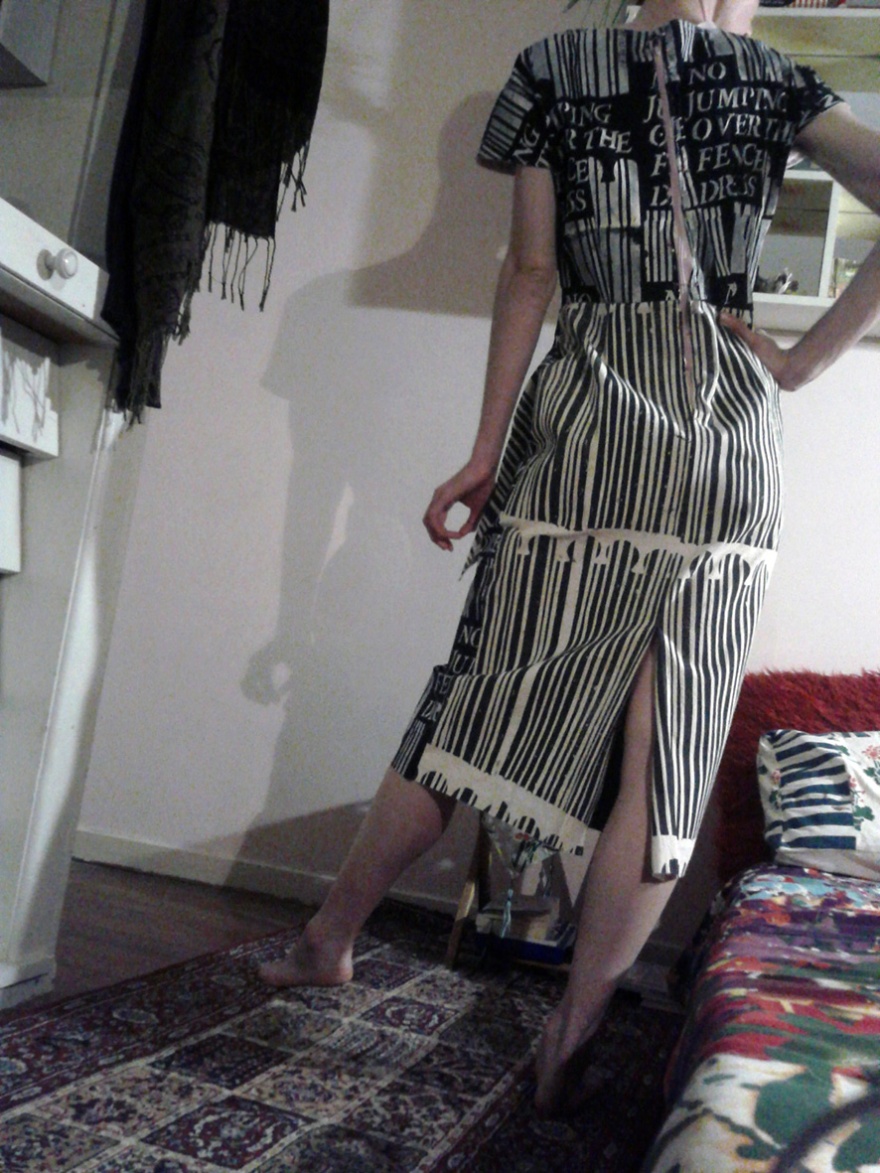
I like to visit op shop’s to find old clothes patterns. I found this Butterick pattern from 1994 at the Vinnies store in Margate. It of course reflects nineties style but also taps in to an older mode of elegance – with view B particularly reminding me a bit of a 1940s pencil skirt. Pencil skirts are sexy. Is it because they are a type of binding? By that I mean they restrict free movement. It’s like socially accepted and voluntarily donned fetish-wear. I’m always intrigued by the role clothing plays in regulating behaviour in society.

Ok so it’s a little bit of a stretch (excuse the pun) to call the Butterick dress a pencil skirt but it was enough of a conceptual trigger for me to launch into a punky DIY fashion over-reaction!

My idea arose while I was out for my regular afternoon walk, I like to cut through a near-by school oval, an action that involves jumping over the fence. To be honest its a daily highlight for me, its fun. This simple action of freedom and convenience caused me to realise that if I was wearing that dress I could not easily jump over the fence. This in turn led me to think about the way dresses and skirts for a long time in Western history, have often served to limit free movement for women (see footnote 1).
During WWII women were required to take on physical labour and industrial work while men were busy killing each other. This was a liberating time for women to apply their minds and bodies to practical work. Work wear of this era is unisex and functional allowing free movement and protection from hazards in the work environment.

In the latter half of the twentieth century, and in contemporary times, the pencil skirt seems to have become a kind of self imposed sexy-clothing-handicap for women who compete for money in a shared work place with men. I concede the pencil skirt denotes power in some senses, sexuality is powerful. Fitting a fantasy is a type of useful leverage. It is a mode of femininity which the individual woman is free to adopt, I understand, it gets you places.

At a practical level though the pencil skirt is undeniably hobbling. It prevents free movement to run and jump and that limits your ability to protect yourself in a physical sense. This telegraphs that woman despite being mentally equal, some may argue superior, to her male counterpart is relatively physically passive, this does have subconscious implications for the perception of women in a broader social sense. The pencil skirt is a free choice and it’s evidently very popular, so there must be benefits that outweigh the cons. Maybe I’ve got it all wrong. Perhaps the pencil skirt is not part of a capitalistic mating ritual. Maybe it speaks to the fact that woman has such brains that her physicality is no longer important making it a perversely natural evolutionary adaptation to life in a corporate environment?
Anyway the point is I am interested in pencil skirts because they reflect a kind of alluring and prevailing association with financial success and corporate professionalism.
Back to the project.

My design is punky and anti-aesthetic (rough, patchy and imperfect) because the Butterick dress pattern design is so neat and demure. It’s intended as a simple formal contradiction. I designed this typographic print to be like a self-referential visual joke, it only makes sense in the context of the dress form it is contained within. I had a go at incorporating fence like barcode graphics in this design but really could have resolved it better- I was over-excited to get the project moving! To reinforce that the graphic element makes reference to a fence I decided to make a complimentary design that echoes the same form in contrasting colours. I did this with the intention of using it on the overlay at the front of the dress as shown in the pictures on the Butterick pattern packaging.

I’ve got a lot of signification going on here, and heaps of free-floating reasoning. At this stage I am giving myself freedom to act intuitively to express myself through the medium of fashion design. I aim to be a little more rationalised and better researched about historical modes of dress next time because it will contribute positively to the creative process. Knowledge is power.

Enough conceptual stuff, at a practical level I bought this dress pattern because it provided me with a couple of new sewing challenges – the overlay, the facings inside sleeve and neck and insertion of a long zipper that spans both the bodice back and skirt back. It’s size range was 12-14-16, I used the size 12 option but it still proved to be baggy on me ideally a smaller size would’ve worked better. I enjoy the limitation of only buying second hand patterns from a conceptual and financial perspective so it is a compromise I don’t mind making. It also challenges me to have a go at alterations to improve the fit.


Thanks for checking out my project!
See my earlier illustration post Neue Frau, out late. For more on the topic of gender politics in twentieth century women’s fashion.
Footnote 1: My focus on specifically Western modes of women’s fashion is not intended as a racially exclusive action it is more concerned with capturing a kind of personal and authentic stream-of-consciousness logic which reflects my specific background and the cultural climate I observe around me. Comparative fashion studies – looking at the way gender is represented through fashion cross-culturally – is a super important topic which I will engage with in future posts.
Please note: In this article I am capturing my personal reaction to gender representation through fashion. It is personal opinion only and is certainly not meant as a directive about how gender should manifest. I take a tongue in cheek approach with my views but I am serious about my concern for the way our clothing choices subconsciously affect others perception of us. I take a binary stance because despite amazing progress in social acceptance of gender fluidity in recent times, fashion in the main-stream remains heavily influenced by traditional gender norms (see the screen captures I made of my causal google searching for common fashion terms above). Because traditional gendered items of clothing linger and recur I am inclined to study them to gain a deeper insight into the power dynamics at play, specifically the way dominance and submission are telegraphed through such items.
Image source:
https://www.studenthandouts.com/01-Web-Pages/01-Picture-Pages/10.13-World-War-II/Home-Front/22-Women-Welders-World-War-II.htm
